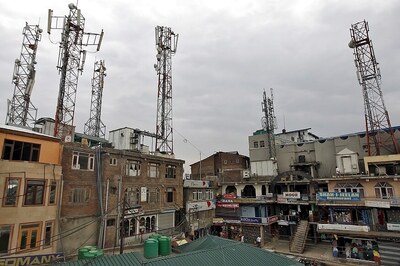
views
National Nutrition Week was observed in India for the 41st time in the week gone by. Each year, the first week of September strives to create awareness of the importance of nutrition in different ways.
Just a week before this, however, Hyderabad’s IT sector employees had their own moment of awakening when a study conducted by the ICMR-National Institute of Nutrition, Hyderabad, came out with its report.
It was revealed that nearly a third of the 183 techies surveyed, across IT companies of varying sizes, were found to have MetS (Metabolic Syndrome).
A Not-So-Polite Awakening
Mets is the presence of three or more of the following parameters:
Waist Circumference ≥ 90 cm in men, 80 cm in women
Triglycerides ≥ 150 mg/dL
High-Density Lipoprotein (HDL-C) < 40 mg/dL in males, Blood Pressure (BP) ≥130/85 mmHg
Fasting Blood Glucose level ≥100 mg/dL
MetS, over time, triggers chronic, low-level inflammation and predisposes persons to non-communicable diseases (NCDs) such as cardiovascular ailments, diabetes and hypertension.
These findings were an eye-opener as against the employees’ optimistic bias that they are ‘unlikely to be at risk of developing NCDs’. MetS was more prevalent among those above 30 years, but just the same lifestyle risk factors were present among younger employees.
High Stress, Stress-Eating
The IT (also BPOs) sector, though India’s largest private employment sector, is considered a high-stress occupation. Workload and meeting deadlines are the major stress factors. The average sitting time was found to be more than eight hours a day and involvement in intentional physical activities was very low.
Irregular working hours, night shifts, high work targets, frequent travel, employees spending approximately a third of their day at work etc were all found responsible for employees adopting unhealthy food habits.
India Stands Out
There’s a need to sit up and listen: One, the prevalence of MetS among almost a third of those studied is higher than in the average Asian working population. Two, other similar studies have revealed that overweight and obesity among the economically productive young population of India is one of the highest in South East Asia. Three, NIN scientists inform us that this problem is not restricted to the IT sector, nor to Hyderabad; this is a pan-India, across-industries phenomenon as other studies reveal.
Non-Communicable Diseases Cost Country Dearly
From 2005 to 2015, reportedly, the total economic loss associated with these NCDs in India was estimated to be $200 billion in national income, according to a paper published in Lancet.
Besides, a rising rate of NCDs among younger working-age population means India cannot reap its demographic dividend.
Workplaces as a Means to Promote Health
Having assessed the extent of the issue, NIN’s next step is devising interventions. This report was, in fact, part of a larger study, which aims to develop a strategic model of Workplace Wellness Programs (WWPs) in the country.
Says Dr SubbaRao M Gavaravarapu, scientist and the lead investigator of the study: “Why not use the workplace itself to promote health? What we are aiming for is the comprehensive WWP, where the company will be actively engaged in physical activity promotion that includes exercise, meditation, relaxation and Yoga. The second aspect is creating a food environment in the company.”
The latter is about making available — and displaying prominently or `priming’ — items like fruits, salads, juices, coconut water and buttermilk vending machines and so on. The fast-food category, caffeine-laden beverages etc. will stay, but will be displayed not-so-prominently.
WWPs Status
NIN is reportedly in the process of developing a model nutrition-based wellness programme, after which they will plan the implementation. “We intend to make a policy brief and submit it to ICMR or Health Ministry and see how it moves forward from there. We haven’t thought of an advocacy plan yet,” says Dr Subbarao.
Call For Formalising WWPs
NIN’s wishlist also contains some kind of formalisation of WWPs. Suggests Dr SubbaRao: “Just as environmental clearances, wages, labour laws, etc. need to be in place when setting up companies, why not make WWPs also mandatory — something like a certificate by the corporate saying `nutritionally, we will provide good resources’? Of course, we can only suggest this. NIN cannot be a regulatory or implementation body.” Advocacy with multi-stakeholder groups including CII, FICCI, ministries, and NGOs is on the agenda, though, to moot the idea first and find a direction.
NIN’s efforts are likely to meet with success soon, given that as far back as 2008, a WHO event `Preventing Noncommunicable Diseases in the Workplace through Diet and Physical Activity’, had called for WWPs; and then again Assocham had spelled out in 2018 how adoption of corporate wellness programmes could save India Inc income through a reduction in absenteeism rate by 1 per cent.
Onward and Upward
NIN has, in fact, attempted to materialise a WWP model in three companies in Hyderabad. The medium and small companies dedicated one or more HR person for this and also hired dieticians. In the large company, however, there were compliance issues.
“We do have dedicated teams for such things, but multi-level HR permissions makes decision-making a longer process. However, if there is employee demand for anything, HR does make it happen,” defended a senior employee at a large IT company.
With this recent awareness of the extent of prevalence of MetS, perhaps both employees’ readiness and organisations’ willingness will not be limiting factors in NIN’s efforts.
The author is a journalist, cancer survivor, Yoga teacher and lifelong student. She can be reached at [email protected].

















Comments
0 comment